(+/-)-TRANS-1,2-CYCLOHEXANEDICARBOXYLIC ANHYDRIDE
Synonym(s):trans-Cyclohexane-1,2-dicarboxylic acid anhydride;trans-Hexahydro-1,3-isobenzofurandione;trans-Hexahydrophthalic anhydride
- CAS NO.:14166-21-3
- Empirical Formula: C8H10O3
- Molecular Weight: 154.16
- MDL number: MFCD00064345
- EINECS: 238-009-9
- SAFETY DATA SHEET (SDS)
- Update Date: 2023-06-08 17:06:37
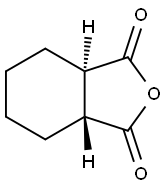
What is (+/-)-TRANS-1,2-CYCLOHEXANEDICARBOXYLIC ANHYDRIDE?
The Uses of (+/-)-TRANS-1,2-CYCLOHEXANEDICARBOXYLIC ANHYDRIDE
Trans-1,2-cyclohexanedicarboxylic anhydride can be used as a reagent to prepare hepatitis C virus (HCV) and granzyme B (indoline derivatives) inhibitors. It has also been employed in studies relating to the development of protein kinase C inhibitors.
Purification Methods
Crystallise the anhydride from *C6H6/Et2O. It has been obtained by heating the cis-acid or anhydride with HCl at 180o for 3hours. It can be obtained from the acid by heating in Ac2O. It sublimes at 125-135o/0.02mm. [Kohler & Jansen J Am Chem Soc 60 2145 1938, Fichter & Simon Helv Chim Acta 17 1218 1934, Beilstein 9 IV 2802.]
Properties of (+/-)-TRANS-1,2-CYCLOHEXANEDICARBOXYLIC ANHYDRIDE
| Melting point: | 145-147 °C(lit.) |
| Boiling point: | 283.4±0.0 °C(Predicted) |
| Density | 1.235±0.06 g/cm3(Predicted) |
| storage temp. | Sealed in dry,2-8°C |
| solubility | Acetone (Sparingly), Chloroform (Slightly), DMSO (Slightly) |
| form | Solid |
| color | White to Pale Beige |
| Stability: | Moisture Sensitive |
| CAS DataBase Reference | 14166-21-3 |
Safety information for (+/-)-TRANS-1,2-CYCLOHEXANEDICARBOXYLIC ANHYDRIDE
| Signal word | Danger |
| Pictogram(s) |
 Corrosion Corrosives GHS05  Health Hazard GHS08 |
| GHS Hazard Statements |
H317:Sensitisation, Skin H318:Serious eye damage/eye irritation H334:Sensitisation, respiratory |
| Precautionary Statement Codes |
P261:Avoid breathing dust/fume/gas/mist/vapours/spray. P272:Contaminated work clothing should not be allowed out of the workplace. P280:Wear protective gloves/protective clothing/eye protection/face protection. P284:Wear respiratory protection. P304+P340:IF INHALED: Remove victim to fresh air and Keep at rest in a position comfortable for breathing. P501:Dispose of contents/container to..… |
Computed Descriptors for (+/-)-TRANS-1,2-CYCLOHEXANEDICARBOXYLIC ANHYDRIDE
New Products
(S)-3-Aminobutanenitrile hydrochloride 4-Methylphenylacetic acid N-Boc-D-alaninol N-BOC-D/L-ALANINOL Tert-butyl bis(2-chloroethyl)carbamate 3-Morpholino-1-(4-nitrophenyl)-5,6-dihydropyridin- 2(1H)-one Furan-2,5-Dicarboxylic Acid Tropic acid 1-Bromo-3,5-Di-Tert-Butylbenzene S-2-CHLORO PROPIONIC ACID ETHYL ISOCYANOACETATE 2-Bromo-1,3-Bis(Dimethylamino)Trimethinium Hexafluorophosphate 4-IODO BENZOIC ACID 3-NITRO-2-METHYL ANILINE 1-(2,4-DICHLOROPHENYL) ETHANAMINE (2-Hydroxyphenyl)acetonitrile 4-Bromopyrazole 2-(Cyanocyclohexyl)acetic acid 4-methoxy-3,5-dinitropyridine 1-(4-(aminomethyl)benzyl)urea hydrochloride 2-aminopropyl benzoate hydrochloride diethyl 2-(2-((tertbutoxycarbonyl)amino) ethyl)malonate tert-butyl 4- (ureidomethyl)benzylcarbamate Ethyl-2-chloro((4-methoxyphenyl)hydrazono)acetateRelated products of tetrahydrofuran
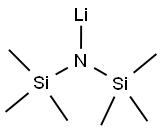
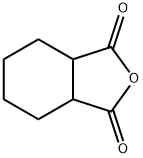
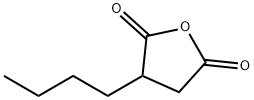
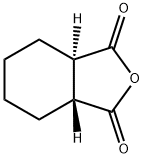
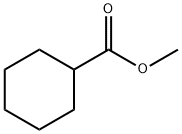


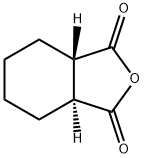
You may like
-
 Trans-1,2-cyclohexanedicarboxylic anhydride 95% CAS 14166-21-3View Details
Trans-1,2-cyclohexanedicarboxylic anhydride 95% CAS 14166-21-3View Details
14166-21-3 -
 (±)-trans-1,2-Cyclohexanedicarboxylic Anhydride CAS 14166-21-3View Details
(±)-trans-1,2-Cyclohexanedicarboxylic Anhydride CAS 14166-21-3View Details
14166-21-3 -
 1975-50-4 98%View Details
1975-50-4 98%View Details
1975-50-4 -
 2-HYDROXY BENZYL ALCOHOL 98%View Details
2-HYDROXY BENZYL ALCOHOL 98%View Details
90-01-7 -
 2-Chloro-1,3-Bis(Dimethylamino)Trimethinium Hexafluorophosphate 221615-75-4 98%View Details
2-Chloro-1,3-Bis(Dimethylamino)Trimethinium Hexafluorophosphate 221615-75-4 98%View Details
221615-75-4 -
 61397-56-6 CIS BROMO BENZOATE 98%View Details
61397-56-6 CIS BROMO BENZOATE 98%View Details
61397-56-6 -
 14714-50-2 (2-Hydroxyphenyl)acetonitrile 98+View Details
14714-50-2 (2-Hydroxyphenyl)acetonitrile 98+View Details
14714-50-2 -
 118753-70-1 98+View Details
118753-70-1 98+View Details
118753-70-1
Statement: All products displayed on this website are only used for non medical purposes such as industrial applications or scientific research, and cannot be used for clinical diagnosis or treatment of humans or animals. They are not medicinal or edible.